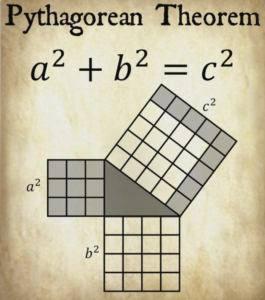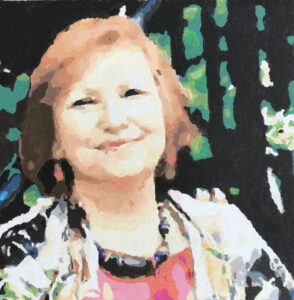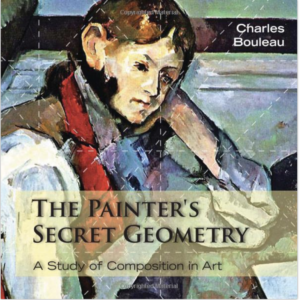Good Design Energizes Our lives
Making positive changes in our environment, particularly bringing in beauty, transforms us. Good design energizes our lives. I created this website to share my life’s experience about design.

I always wanted to be an artist but my high school in rural upstate New York, did not have art or music classes making me search for another source.
The town had a museum curated by a gentleman whom we lovingly called the “Old Professor.” He also taught painting to a group of adults, one who became my art teacher. Everyone, was taught to place the objects on the canvas in a certain template. The Old Professor erroneously called it the Pythagorean theorem.

It was not to be confused with the hypotenuse of a right triangle learned in high school. Instead it was a pattern of horizontal and vertical lines for the best placement for objects on the canvas.
I tried to find references to the theorem when I studied college math, math texts, and the works of Pythagoras, I came up with nothing. None of the art texts contained the theorem, by name or pattern.
Looking for Math in All the Right Places
Yet one book came close. The Painter’s Secret Geometry described the kind of mathematics that painters have used since the inception of the art to the present. The patterns are known as armatures. Architects use a similar device, called regulating lines, in the design of buildings.
Whether armatures or regulating lines, both are used to create a hidden geometric scaffolding.
In essence, we see two things: the theme or object of the artwork and in a more subliminal manner we “see” or experience the geometric patterns that make up the object of art.
The Long Search

The Painter’s Secret Geometry describes many different armatures through the history of painting. The Middle Ages relied heavily on the Golden Mean, and the Renaissance armatures were solidly based on a geometry of proportions adapted from musical scales. Geometric scaffolding of one sort or another was used up to the modern time.
Still, nothing that paralleled the armatures of the Old Professor!
Whenever I looked at paintings done with his scaffolding, I wondered why they were so pleasing. I soon found the scaffolding directed the eye to points of interest, which then enticed it to travel in a circular manner over the canvas. Such movements brought pleasure, the first insight I had about the relationships among geometry, eye movements, and the positive energetic effect on the human persona. (See the Old Professor’s Theorem explained in the Lesson, Finding Energy Through Geometric Patterns, Lesson III.)
Taking Design on the Road
After having left the small town, I made my living in New York City for close to forty years as a teacher of handicapped children, starting in wealthy communities in well-designed and cared for schools. Early in my career, I changed to the public sector and ended my tenure in the inner city where buildings were poorly cared for and students reacted in kind. Vandalism and graffiti prevailed. Yet, it was there I realized how difficult it is for an individual to decorate public space.
Teaching the Teachers That Good Design Energizes
“Decor” is the responsibility of the various public agencies in charge of furniture and paint mixing. When there is a need for a change, the wheels of bureaucracy move slowly. Consequently, one thing or another in the school was always in a state of disrepair or decay. I observed how the negative environment affected students.
I worked alongside many teachers, helping them to create a more aesthetic environment with scarce resources. In the workshop I created, I taught them how to affect behaviors by changing the visual environment.
It was then and there that I developed two careers, one in which I taught academics to the children and the one hidden in my soul, that being decorating. The latter has grown over a lifetime.
Giving Birth to the Metaphysics of Decorating
At some point I decided to put my years of experience, study and intuition into a book about design, in the home as well as in school, in the exterior as well as interior. Aside from developing an understanding how geometry in our design energizes, I also incorporated our relationship to our decorative materials and objects, something that touches upon animism.
Over time I changed from construction paper to silk but the theories used in my teaching days remain the same:
- Good design energizes. It supports human potential and the purpose of human life.
- It doesn’t take expensive goods to create a harmonious environment but rather geometry. (Yes, geometry.)
- To be able to design, we have to know how we see. So some minimal knowledge of visual perception is necessary.
- To be able to design for energy, one has to understand preconceived notions of beauty and relationships to our objects. So somel knowledge of Western philosophy is necessary.
This design book comprises my years of experience, study, and intuition, in the home as well as in school, in the exterior and the interior. When I went back to my hometown a few years ago, I spoke to my art teacher and asked her about the basis for the Pythagorean Theorem we learned in art school so long ago. Unfortunately, she was suffering many of the complaints of older adults and could remember little. The Old Professor had passed away long before.
During that visit, I realized that somewhere along the line, I had become the next old professor. This book is my teachings.



